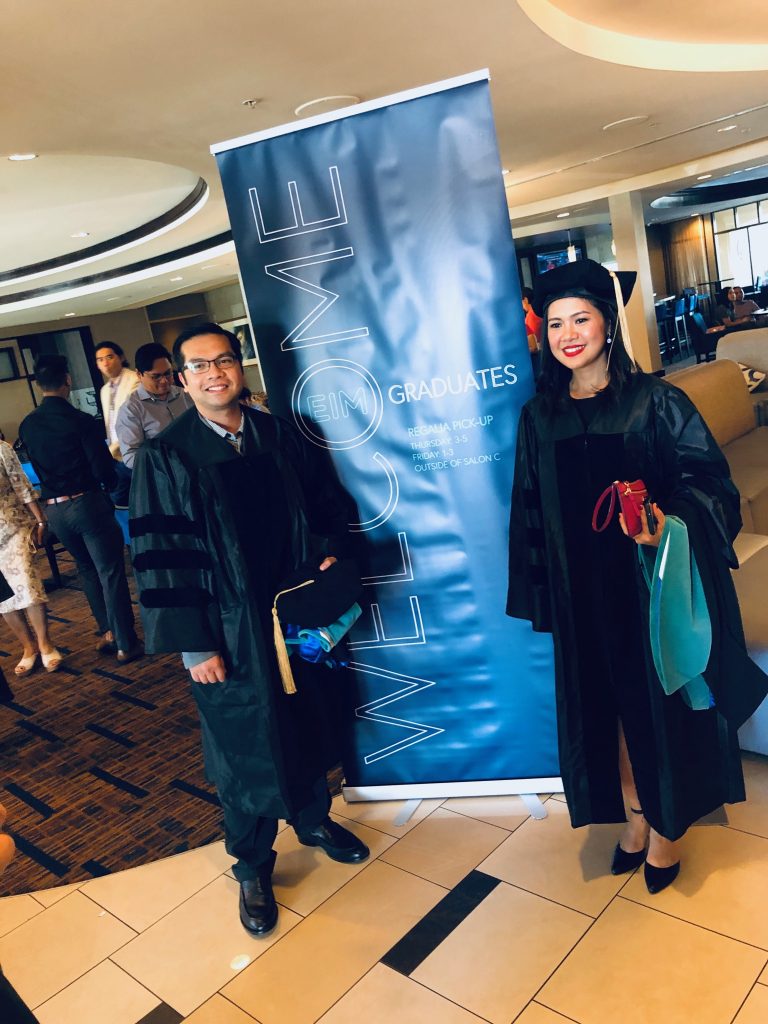
I have a confession to make. I have an non accredited (unaccredited?) tDPT. This is simply because the tDPT program I earned thru completion at MGHIHP is a completely unaccredited program. I must also confess that when I did this several years ago, I knew it wasn’t accredited but I did it anyhow. I already feel better now thru this public declaration.
For the 11,000 or so PT’s who have received a Bachelor’s or a Master’s who then bought into the vision and movement of physical therapy to a doctoring profession by enrolling and completing a tDPT, none of yours are accredited either! In fact, using terminology like “accredited” or “unaccredited” for tDPT is like asking Tiger Woods if he is licensed to play golf-it’s just not the right terminology.
What I have come to find out unwittingly is that the tDPT might be the most misunderstood concept within our own profession. There is no accreditation, credentialing, or external approval for tDPT’s by design. It is an aberration in the education circles as there have only been a handful of professions that have migrated from bachelor’s to master’s to doctorate. Delving into those, namely optometrists, podiatrists, pharmacists, audiologists is actually quite interesting since there are few similarities in the way that each transitioned. My favorite is the Podiatrists who woke up one morning after the good “doctorate” fairy sprinkled “initials” dust on them and they were all of the sudden Doctors of Podiatry. Perhaps the optometrists were the most crafty-simply transitioning by name-if you happened to graduate before they converted to entry level doctorate degrees, you were forever labeled an optician. Pharmacists, Audiologists, and us have been triplets of different mothers-choosing to be hybids of one another. Frankly, APTA’s tDPT advisory group and the subsequent development of the PTET for very good reasons utilized a very similar framework as the Audiologists. Admittedly, with 200+ PT programs and varying requirements by State’s Boards of Regents and licensure boards, it would have been impossible for PT to have a consistent across the board method. Great credit goes to APTA by defining a preferred curriculum model and further revising it to provide guidance for those educational institutes who are obliged to follow.
The tDPT concept is really very simple. Provide education in core competency areas that have been added since bachelors and masters to “true up” those that are now part of the entry level tDPT. Obtaining a tDPT was never meant to be a requirement for licensure which is one of many reasons why an outside agency like CAPTE or anybody else would never waste their time accrediting. It is a post professional educational program with perhaps a lifecycle of 10-20 years. Within the 2020 vision of PT being supplied by clinical doctorates, the tDPT is to bridge those PT’s who currently have a bachelors or a Masters to the doctorate level and have it become the de facto for our profession. It is a “clinical” doctorate thus not necessitating extensive research projects nor any required publication or dissertation. Please note that this means the tDPT is not a “scholarly” degree meant to prepare one for a teaching position within a PT program. Those so inclined towards that should prepare thru a traditional PhD program or the like. It should also be noted that the designator for physical therapy is PT and not your degree-this may change in the future.
Because physical therapy is a hobby for me as well as my vocation, I decided to do an extensive current and historical check on the way more than the reported 70+ tDPT programs. Frankly, there are so many that I am sure it is impossible to keep them up to date on APTA’s website. Not surprisingly, the most common programs are those that already are PT degree granting. They have in many cases provided a method for their prior graduates to obtain their DPT by allowing them to get the coursework that was added to the entry level DPT program. They understandably limit the eligibility to their prior graduates. Some have already ceased being in existence having reached their goals. There are also numerous programs that are based out of university’s that have transitioned their entry level to DPT and allow licensed PT’s from any program to enroll. Many review portfolios and then determine the necessary coursework that must be completed to earn the tDPT. I personally chose to go this route with MGHIHP’s because I was impressed with their process, director, instructors, and completely online opportunity. As you can imagine, many programs are completely online, others are completely in residence, and yet others are a combination of both. The critical component is whether they fulfill the intent on the “gap” in knowledge/competencies between B.S., MPT, and fulfill the preferred curriculum model as espoused by APTA thru member consultants representing academia and practice.
Unfortunately, it then gets a little erratic. If you do enough searching, there are clearly diploma mills for tDPT including those that give you the tDPT if you take enough of their traditional CE courses without respect for the intent or the model of tDPT. I even found one that is only a tDPT if you are a foreign trained PT. Ironically, they don’t even list their courses! There are also tDPT courses that have you “specialize” in a particular area. This is a little confusing for me because that is not the intent of the tDPT but it does allow one to essentially combine courses in fulfillment to the curriculum model and additional one’s that are of interest to perhaps allow focus on an area of study. It is also difficult to tell in today’s world whether the organization is “allowed” to be degree granting. Although there is no accreditation for tDPT, almost every state has a licensure of sorts for educational organizations. Perhaps anybody can call themselves a “university” the tell tale sign is if they have gone thru the process and rigor within their jurisdiction to actually allow them to do what they do.
What I find the most difficult to understand is the lack of popularity of the tDPT. Given change in technology, there is simply no excuse for not obtaining if you really believe in our profession’s vision. While cost can be a factor, there are lots of very good programs that allow you to obtain it while still maintaining your work/life balance. While we will never transition 100% of PT’s to DPT’s like the podiatrists, there are opportunities to move large numbers to DPT and provide for unprecedented elevation of the profession. The approach that we have taken at EIM’s Institute of Physical Therapy is to couple an executive management curriculum with the necessary clinical courses detailed in the preferred curriculum model. The students simply take the necessary and same clinical courses that our APTA credentialed residents and fellows. While it is clear that a good portion of our executive management folks are not doing day to day patient care, we maintain that the knowledge base must fulfill the intent and model of a tDPT such that pharmacy, medical screening, radiology, and EBP courses are mandatory after determination thru a portfolio review that the candidate is a fit for the tDPT. We have even partnered with the Private Practice Section of APTA to create this opportunity for the many that want a tDPT but also want to enrich their practice’s operations.
Thoughts?

––– Comments
leslie
Commented • February 12, 2021
Hi Mark, thanks for your question. The transitional DPT program is recognized by the Kentucky State Board for Proprietary Education but not accredited through the US Department of Education.
Mark
Commented • February 11, 2021
Is tDPT from EIM an accredited program?
Leslie Moon
Commented • October 21, 2020
Hi Ishant, thanks for reaching out! I am going to send you an email and connect you with an enrollment advisor that will be able to answer your specific questions!
Ishant Walia
Commented • October 19, 2020
Hello I am a foreign educated physical therapist working in the US for the last 4 years. I am looking forward to join tDPT Spring 2021 term. Can you please provide me the following information (for me being a Bachelor’s degree holder): 1. How many credits/courses I need to do for tDPT? 2. Shortest amount of time in which the whole tDPT can be done? 3. Total fee for entire course? 4. How can I pay the fee? Like equal monthly payments of quarterly payments per semester? 5. I know it’s completely online but anytime (before beginning, during or after completion Of course) do I have to visit the university for any reason? Like some universities have residency or in-person classes for 2-3 days before starting the course. Do you have any sort of thing like that? Please let me know. Ishant Walia
Jena Berryman
Commented • May 13, 2020
I understand that CAPTE does not accredit tDPT programs, but universities and college's that offer tDPT programs are accredited. This does not support the bias that is within this article as some agencies will not acknowledge a tDPT degree that is not obtained through an accredited institution.